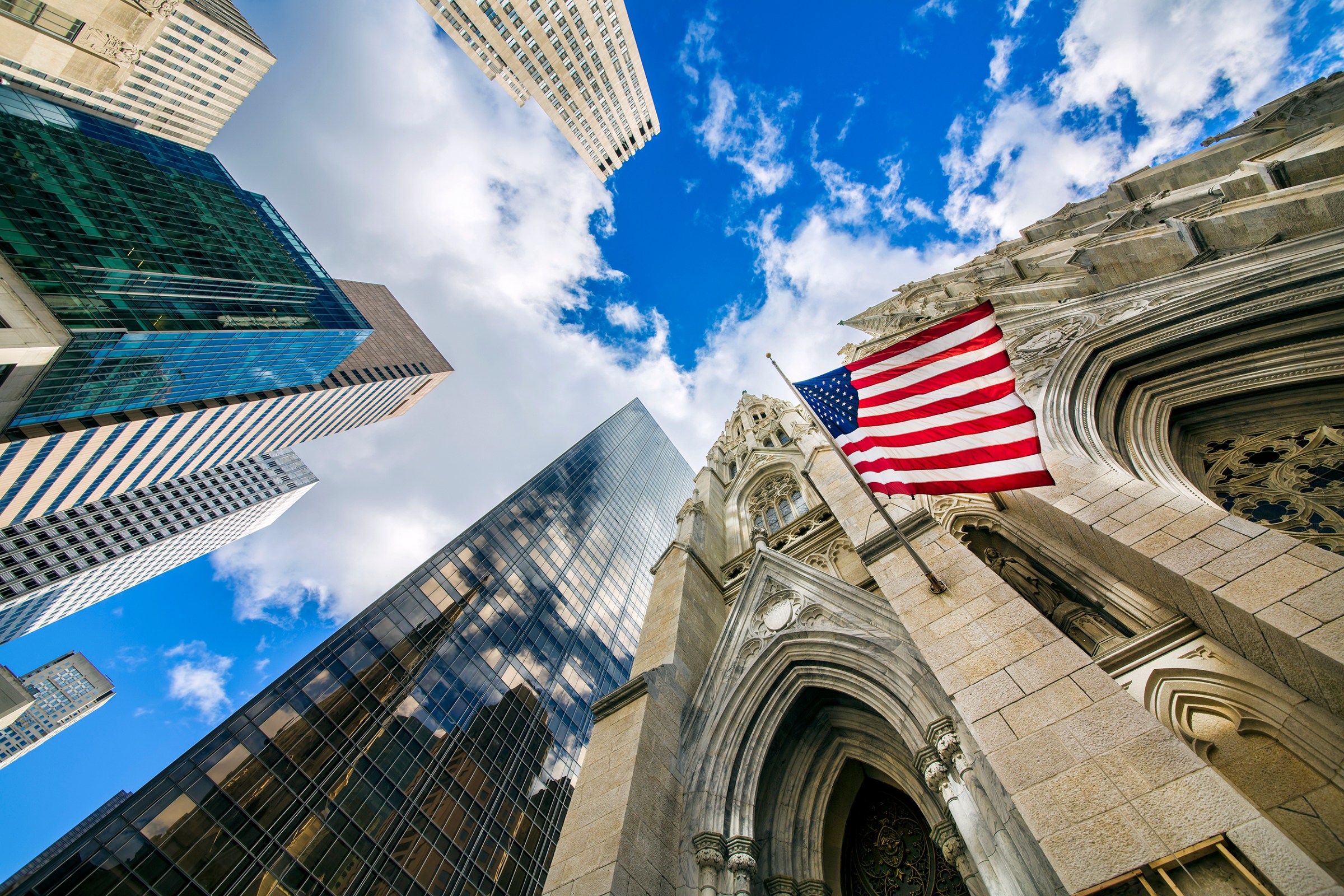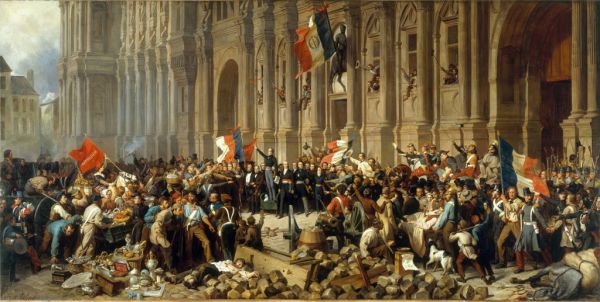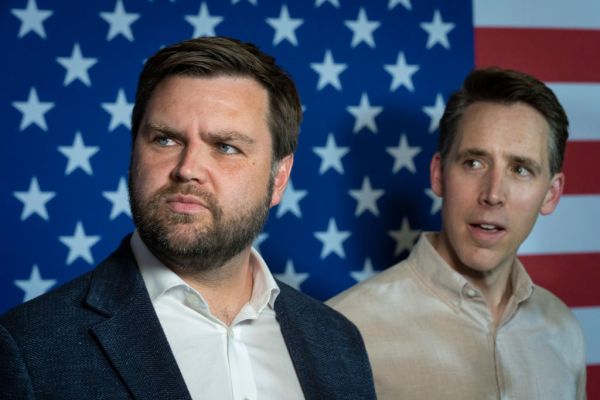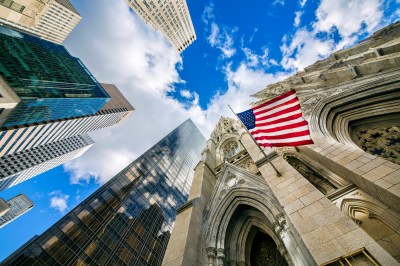Liberalism has faced criticism since it emerged in the late 18th century, whether from socialists who thought it downplayed solidarity, fraternity, and equality, or from conservatives who considered it harmful to traditional institutions like the family, the local community, and the Church. But by the end of the 20th century and into the 21st, liberalism had seemingly defeated its opponents. Almost everyone in the West defended liberal institutions. Take the 2012 U.S. presidential election: Mitt Romney was no illiberal right-winger, and Barack Obama was never a socialist. They both were—to different degrees, certainly—liberals.
Things changed in 2016. Suddenly, immigration restrictions and aggressive right-wing approaches to the culture war became influential, if not dominant, in many liberal democracies. Culture trumped economics. In the U.S., questions of identity took over the “national conversation” that health care reform had occupied a few election cycles prior. The political right—now content with a large welfare state and eschewing fiscal discipline—started winning elections.
These political changes brought in a new generation of anti-liberals, including some who offered radical alternatives to the liberal order. First among these post-liberals were the Catholic integralists, a group who, among other things, holds that the Church can authorize and direct the state to support it with certain policies, even to the point of backing up Church law with civil penalties.
While the first integralists were located in Europe, by 2016 American integralists—most prominently academics like Patrick Deneen, Gladden Pappin, and Adrian Vermeule—ran the show. They wrote prominent books, developed theories radically modifying basic functions of government, and tapped into the frustrations of a young generation of conservatives.
Nevertheless, this radical and once-energetic element of the post-liberal movement has collapsed in the last few months. That’s not to say that fusionists can’t learn from their declining popularity (or that integralists can’t make a comeback). But in order to begin speculating about the lessons the integralist moment can offer, it’s important to first try to grasp what integralists believe.
Integralism’s British origins.
Right-leaning post-liberals certainly existed during the era of liberal dominance. They espoused a right-leaning communitarian critique of liberalism, albeit with social democratic sympathies. Starting in the mid-2000s, though, several traditionalist Catholic intellectuals intensified these critiques.
Specifically, this group of Catholics grew skeptical of the Church’s doctrine of religious liberty, blaming it for the decline of Western European and American Catholicism. Led by the British philosopher Thomas Pink and Father Edmund Waldstein, they pushed back against “traditionalist” opponents of the Second Vatican Council and sought to sync Catholic theology with the council’s new teachings. Pink in particular reinterpreted the council’s leading “liberal” document on religious liberty, Dignitatis Humanae, to understand its teachings as continuous with the 19th-century popes’ more traditionalist views about church-state relations. Pink, Waldstein, and others called this integralism.
According to integralism, God authorizes the Church and the state with distinct divine missions. The Church is responsible for the supernatural/spiritual good of the baptized and the Great Commission (Jesus Christ’s mandate to spread the Gospel to all nations), while the state promotes the temporal common good among the people. Though many Christians affirm these two doctrines, a third condition sets integralism apart: Since God ordained the Church and state, there must be some proper unity or integration between them. They must generally respect each other’s sovereignty and work together, but the state must defer to the Church in some cases of conflict or disunity.
The British integralists understood that no organization can flourish without disciplining wayward members. The same goes for the Church. But the Church had stopped doing that with its own law. It no longer held its members accountable for sin, reducing and even eliminating penances. The punitive element in Catholic spiritual life had collapsed. To renew itself, the Church should use canonical penalties against the faithful, reviving its historical practices, they argued.
But the British integralists also ran too far with this sensible point. Indeed, they also called on Christian states to impose civil penalties for ecclesiastical crimes in some cases. The Church could integrate with the state so that both institutions advanced the salvation of their members. That would really demonstrate that the Church takes sin seriously.
These integralists knew that the Church and the state could not reintegrate today. So rather, they aimed to show other Catholics who the Church was and how the Church must reform. Despite their political claims, they were not especially politically active.
It would be a different story for the American integralists.
The rise and fall of American integralism.
The election of Donald Trump changed the movement. While British integralists continued their largely academic work, American integralists saw an opportunity to make integralism political. Some of them, such as University of Dallas Professor Gladden Pappin, regarded Trump as a blunt tool to defeat secular liberalism and—according to interviews I conducted for my recent book on Catholic integralism and similar religious, anti-liberal doctrines—encouraged fellow travelers to become more politically engaged. Sohrab Ahmari, a young and charismatic journalist, became Catholic and joined their ranks. Most importantly, the integralists converted Adrian Vermeule, a professor at Harvard Law School who single-handedly gave the movement some clout.
This new generation of “right-integralists” began a state-facing project. They aimed to hasten the end of liberal government and build an integralist state in the ashes. Their reputation spread (though not always positively) and their numbers expanded.
What drove them? Conservative Catholics felt blindsided by the LGBT movement’s rapid progress. The 2015 Supreme Court Obergefell decision (and the 2020 Bostock ruling later on) shook them. An increasingly radical defense of abortion rights dismayed them, worsened by the limitation of religious exemptions. The Little Sisters of the Poor, a group of nuns that served the needy, came in for governmental scrutiny when the Department of Health and Human Services issued a contraception mandate under the 2010 Affordable Care Act. The mandate contained religious exemptions, but it failed to protect the Little Sisters’ freedom not to provide contraception to its members.
So, these Catholics responded with more openness to radical diagnoses. They offered radical solutions, especially by recommending the creation of an integralist state. Vermeule developed a transition plan toward integralism in a series of articles. Liberalism, these integralists predicted, was bound to collapse, and a Catholic confessional state could replace it. However, that could only occur if integralists took positions of power in the executive and judicial branches of the federal government.
They soon rebranded and grew. They abandoned the “integralist” label and adopted the vague and seemingly less radical “post-liberal” moniker instead. “Post-liberal” came to describe integralist or near-integralist positions and centralized state strategies. After the success of his 2018 book Why Liberalism Failed, Notre Dame political theorist Patrick Deneen joined their ranks. The integralists also formed new digital institutions, most prominently the Postliberal Order Substack and The Josias blog.
Following what many saw as a defeat in the 2020 election, post-liberals shifted their attention toward constitutional interpretation. In particular, Vermeule’s “common good constitutionalism,” in contrast to conservative originalism, argued that judges should draw on substantive moral values in ambiguous cases (though not progressive values). For instance, in free speech law, considerations of the common good might allow for more speech restrictions than current U.S. law allows. Additionally, if the administrative state better serves the common good when it can operate relatively free from Congressional interference, then that too should guide judicial interpretation.
These ideas have spread even under the Biden administration. They have exploded among young people in particular, as I’ve seen both in my own classroom and in conversations with fellow professors. In the following years, perhaps thousands identified as integralists and formed online communities.
However, the integralist reorientation to policy change left integralist theory behind. Many new integralists meant something vaguer by the term. In discussions with my undergraduate students, I have found that some might call themselves Catholic post-liberals but do not adopt the pure integralist view, the indirect power. The integralist rebrand succeeded, but young people lost their sense of its radicalism. That meant reduced intellectual energy.
Despite its rapid success, post-liberal thought declined steeply and then seemed to collapse in early 2024. Rather than energizing the movement, Deneen’s 2023 book Regime Change was widely panned. Common good constitutionalism had better intellectual credentials, but it faced headwinds too: The Dobbs decision overturning Roe delivered a major conservative victory on abortion via the older, originalist judicial paradigm. Pappin gained a position in a state-run research institute in Hungary by appointment from Viktor Orbán, but his new diplomatic post prohibited outward radicalism. Ahmari seemed to focus almost on economic issues, pivoting away from being a “defeat the enemy and enjoy the spoils” new right advocate to someone who defends the partial democratization of the workplace. By early 2024, this once-cohesive cohort seems to have splintered.
But more importantly, the integralists also suffered a grave intellectual defeat: They lost control of their ideas as critics outlined integralism's intellectual challenges. One can find online article after article from integralists attacking classical liberalism. However, none of the active American integralists has published a peer-reviewed article defending their philosophy—a notable difference from the British integralists.
When I published a book on integralism, I began to talk about these issues nationwide. My interlocutors and I would hash out problems at academic conferences. The American Catholic Philosophical Association has hosted us. We would discuss topics following lectures where leading integralists worked—but the American integralists aren’t there. Even their chief intellectual outlet, The Josias blog, has dramatically reduced its output.
The integralist research program seems to have ground to a halt. Despite the energy the movement galvanized a short time ago, the Catholic post-liberals today appear to be in decline.
Lessons for a new fusionism.
Which is not to say integralism couldn't return. Its leaders could reemerge with vigor, revamping their coalition and forming new alliances. Someone could write a new, influential integralist treatise. If Ohio Sen. J.D. Vance, a friend of Patrick Deneen’s, became vice president in a second Trump administration, the movement could get an intellectual boost.
But what might fellow traditional fusionists learn from the rise and fall of the American integralists?
To start, fusionists should consider why post-liberalism garners youthful passion. Why does it have the energy that fusionism has lost? One reason is that many answered post-liberalism’s attacks on “Conservatism, Inc.” via old formulations of the main ideas. We didn’t try hard enough to parse through what was right and wrong in the fusionist intellectual milieu. The result? Fusionists often appear out of touch and cannot light new fires in the minds of young conservatives.
The fusionist movement thrived when responding to the severe challenges of international communism. Three vibrant intellectual movements (libertarianism, Christian conservatism, and anti-communist foreign policy) mostly made common cause. Yet, each of those movements had leaders with tremendous intellectual energy and patience, as seen alone in the volume of their writings—such as Milton Friedman and F. A. Hayek, Russell Kirk, and John Finnis, and broader anti-communist works from reformed leftists, like Whittaker Chambers down through Irving Kristol.
Each of the various subgroups of the fusionist coalition can refocus its efforts today. Libertarians should focus less on their internal culture war and more on preserving free institutions from decay by statist ideologues. Social conservatives should devote their energy to reevangelizing the country and persuading people of their views, especially on abortion. And those concerned with American military power and international influence must understand that figures like Vladimir Putin and Xi Jinping have become more aggressive because they see the U.S. as falling apart and at war with itself.
But more fundamentally, for a new fusionism to arise today, its members will have to coalesce around a new common threat—and in our moment, it’s one not from outside the United States but from within. The greatest threat to liberalism and our constitutional order today arises from declining social and institutional trust and from an extreme, unproductive political polarization. The new fusionism must therefore better understand the moral principles and social science that shapes political polarization. It should seek how to improve institutional and social trustworthiness and remove the incentives that lead to more polarized institutions. Why? Because it’s hard to feel comfortable allowing others to be free if we think they are untrustworthy radicals.
To their credit, post-liberals understand that the country is in a cold civil war between progressive and conservative elites. However, our current mass psychological attitudes are not inevitable but the result of a host of interlocking and often opaque social dynamics. As I have argued, this conflict is partly an illusion created by mistrust and polarization. But post-liberals are right about how conflictual things seem.
Many conservatives propose some kind of new angle on old attitudes as a way to overcome the post-liberal moment. But whatever the path forward for fusionism, it would benefit from recognizing that the nation turned against itself is the real enemy, and that the hard work of understanding our political divisions and proposing reforms to bridge divides cannot be ignored.






Please note that we at The Dispatch hold ourselves, our work, and our commenters to a higher standard than other places on the internet. We welcome comments that foster genuine debate or discussion—including comments critical of us or our work—but responses that include ad hominem attacks on fellow Dispatch members or are intended to stoke fear and anger may be moderated.
With your membership, you only have the ability to comment on The Morning Dispatch articles. Consider upgrading to join the conversation everywhere.